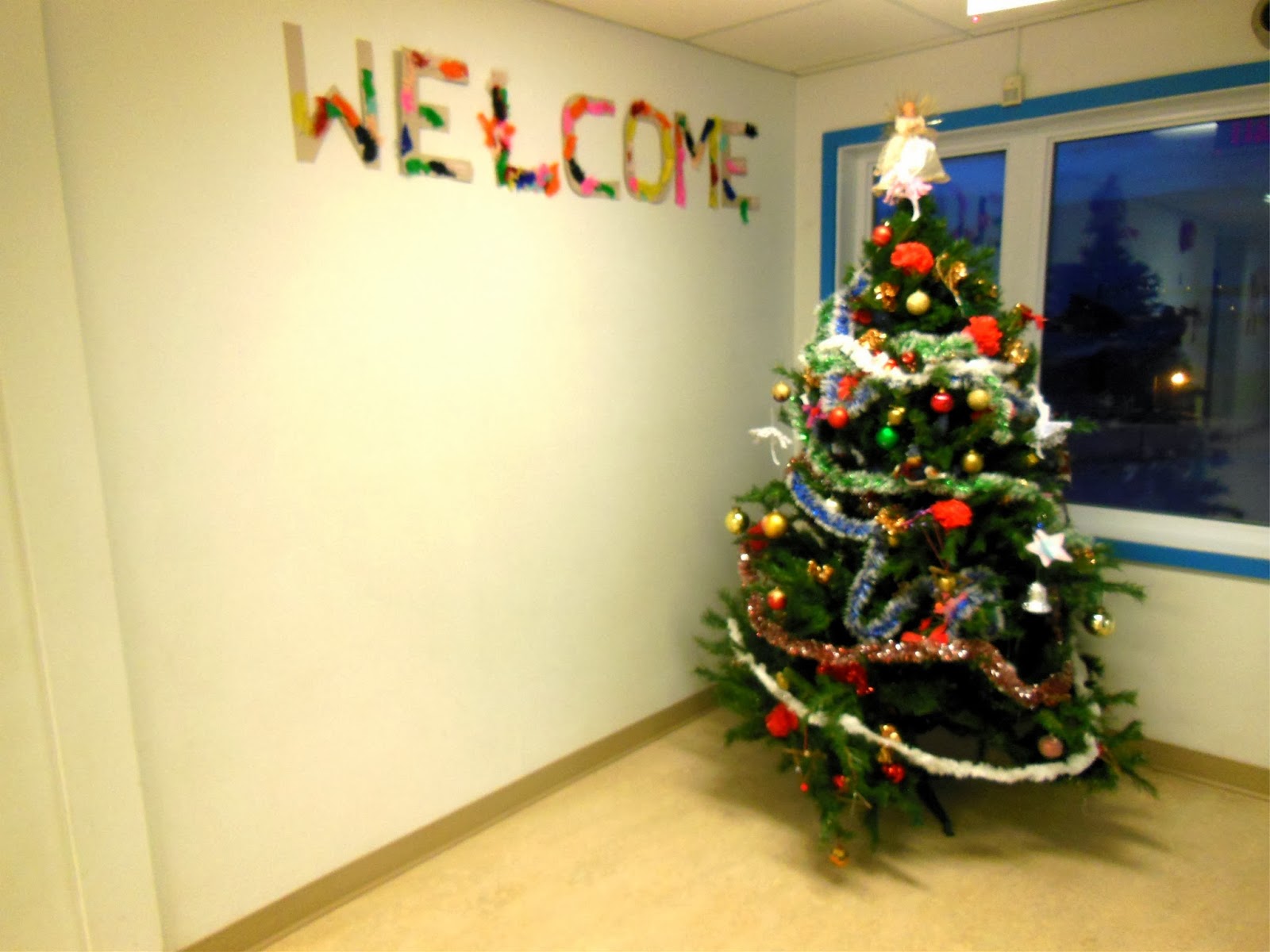December
16th was a day of anticipation; Santa was coming to town. Every December, the jolly man in red visits
northern communities across Nunavut, bringing toys, food, and Christmas cheer
to Inuit children. Unfortunately, due to
a tight schedule, Santa can only spend an hour or two at the towns' airports. It's quite an intensive and potentially
exhausting flying schedule. As well,
don't expect to see a large red sleigh being pulled by reindeer. In the north, Santa travels by plane and visits
about 5 to 6 communities per day.
The
Santa flights have been a tradition in the north for many decades. They happen in all three territories (Yukon,
Northwest Territories, and Nunavut). I'm
not sure how many Santas fly up north but I know it has to be a few. What is intriguing is that the flights
originate from southern Canada, not from the North Pole. In the Arctic, Santa lives down south. I believe the Santa flight that came to
Arctic Bay was organized by Keewatin Air.
I
managed to catch a glimpse of Santa's plane flying into town in the afternoon
as it descended from the clouds. The
turboprop was covered with colourful Christmas lights. Since I wasn't expecting the plane to arrive
early in the afternoon, I didn't have my camera out to take a picture. A short time would pass until a line of cars
& trucks, filled with excited kids and parents, would drive towards the
airport.
 |
| High school student Pauloosie takes a break from decorating. |
As
Santa's plane flew above me, I was escorting several high school students to the
town's Community Hall. The place needed
to be decorated and set up for the Christmas concert the following
evening. That was the other reason
behind the anticipation; the concert was just 24 hours away! It was dark outside even though the time was
just after 3pm. Once inside the Community
Hall, the high school students immediately went to work, setting up rows of
chairs. A large box of Christmas
decorations arrived when all the chairs were in place. While the girls sorted the decorations, all
the guys moved the large & heavy pool table off the main stage. We then placed it in a nearby corner. The students spent another two hours pasting
decorations all over the Community Hall.
There were colourful ribbons, Christmas trees, and loud singing
reindeer. The students were well
behaved; I didn't need to delegate or keep students on task.
A dress rehearsal was held at the Community Hall in the afternoon the next day (December 17). Naturally, all afternoon classes were cancelled and the entire student body, (230), occupied the building. After seeing so many kids inside the hall, I wondered if there would be any seating space left for families, friends, and invited guests. I've been told that roughly one third of Arctic Bay's population are children.
The
dress rehearsal gave students and teachers an opportunity to practice their
acts, get rid of feelings of stage fright, and enjoy a sneak peek at what each
group was presenting. There would be
twelve acts in total, starting with pre-school, then kindergarten, followed by
the grade classes & the high school drum line, ending with the adult staff. There would be music, dancing, square dancing, and skits. Since the adult staff were keeping their act
a secret, my drummers & I had the honour of finishing the dress rehearsal
with a bang (pun intended). The
preschoolers, kindergarteners, and younger grades all crowded at the front of
the stage to hear the drums. When the
curtains were pulled open, it appeared everyone was watching us. We played through our routine to the cheers
of the student body. After the drummers
and I took our bows, I hoped we would receive the same reception later that
night (more details coming up).
 |
| MCs Geela & Caroline. |
 |
| Kindergarten performance. |
 |
| Grade 3 performance. |
 |
| Grade 6 performance. |
 |
| Grades 7 & 8 performance. |
 |
| A sign indicating that grade 7 & 8 students were needed near the front of the stage because they were the next act. Similar signs were used for all other grades. |
At
the conclusion of the game, we all thanked everyone for attending the concert
and wished them all a Merry Christmas and a Happy New Year. While the school staff and several high
school students cleaned up the hall, a few elementary students came up to me,
wanting to know how to bounce the drum sticks off the floor. I gave them a quick impromptu lesson and let
them give it a try before helping my drummers load all the drums and equipment onto
a pickup truck I borrowed from Frank, the town's mayor. We drove back to the school and carried all
the instruments back into my classroom. I
called it a night after dropping off my drummers at their homes.
At
school the following day, several Inuit teachers came up to me to say they
really enjoyed listening to the drum line at the Christmas concert. They also added that many local elders had
called the local radio station to voice their approvals as well. I thanked them for the good news.










































